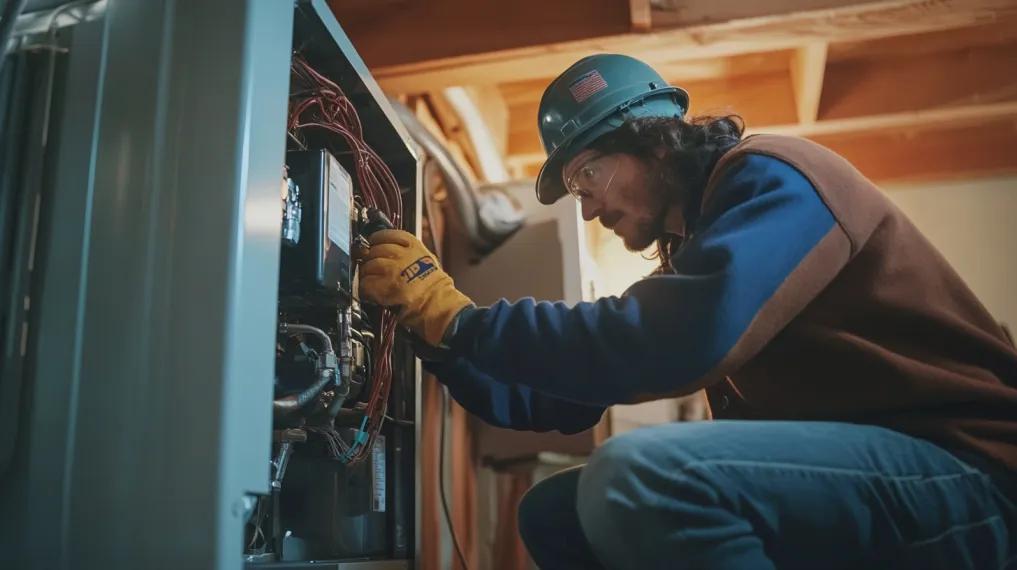What Is an AFUE Rating?

Annual Fuel Utilization Efficiency Determines How Well a Furnace Converts Fuel to Heat
The HVAC industry is brimming with acronyms that can seem like a foreign language to some homeowners. While many of these abbreviations are just technical jargon or industry-specific terms, some can provide valuable insights when buying a new HVAC system.
One such acronym is AFUE, which stands for Annual Fuel Utilization Efficiency. HVAC.com explains what an AFUE rating is and why upgrading to a higher-efficiency heating system can save on energy costs and lower your carbon footprint.
What Does AFUE Stand for and Why Does It Matter?
AFUE measures how efficiently heating systems, including furnaces and boilers, convert fuel into heat over the course of an entire heating season. Expressed as a percentage, it represents the ratio of heat output to the total energy consumed. For example, a furnace with an AFUE rating of 90% means that 90% of the fuel is converted into usable heat, while the remaining 10% is lost in the heating process.
Since the AFUE rating greatly affects both long-term energy costs and system performance, it should be a key factor in your decision-making process. Higher AFUE ratings generally lead to greater efficiency, lower energy bills, and a reduced environmental impact.
Average AFUE Ratings: What’s Considered High, Mid, and Low Efficiency?
- High Efficiency: Gas furnaces with an AFUE rating of 90% to 98.5% are generally considered high efficiency. These systems are designed to maximize energy use to lower utility bills. High-efficiency furnaces often feature advanced technology such as secondary heat exchangers, variable speed blowers, or modulating burners. To receive the coveted Energy Star certification, gas furnaces must have a 90% rating or better in the U.S. South and 95% rating or higher in the U.S. North. Oil furnaces need an AFUE rating of 85% or higher to qualify for Energy Star certification, while oil boilers and gas boilers must have AFUE ratings of 87% and 90%, respectively.
- Mid Efficiency: Systems with AFUE ratings between 80% and 85% fall into the mid-efficiency category. While not as efficient as Energy Star models, these systems still offer strong performance and can be a cost-effective option for homeowners looking to balance efficiency and budget. According to the U.S. Department of Energy, mid-efficiency furnaces feature exhaust fan controls, electronic ignitions, and a more compact size and lighter weight to reduce cycling losses compared to low-efficiency models.
- Low Efficiency: Heating systems with AFUE ratings below 80% are considered low efficiency and are not manufactured anymore. These systems, which may feature AFUE ratings between 56% and 70%, waste a significant amount of the fuel they consume, leading to higher energy bills and less effective heating. Upgrading from a low-efficiency system to a higher-rated unit can result in substantial savings over time.
It’s important to note that the minimum efficiency standard for gas furnaces is 81%. In 2023, the federal government mandated that all gas furnaces manufactured starting in late 2028 must have an AFUE rating of at least 95%.
Costs and Savings with Higher AFUE Ratings
Higher AFUE-rated heating systems generally come with a higher upfront cost compared to lower-rated models. The added cost is often due to more efficient components and advanced technology including sealed combustion and secondary heat exchangers. However, this initial investment will typically pay off in the long run through lower energy bills and improved comfort.
For example, a high-efficiency furnace with an AFUE rating of 95% can significantly reduce energy consumption compared to an older, low-efficiency model with an AFUE rating of 80%. Homeowners with high-efficiency systems often see a reduction in heating costs by 10% to 20% or more, depending on their climate and fuel prices.
Over the lifespan of the furnace, these savings can offset the higher initial cost, leading to overall financial benefits. For example, upgrading from an 80% AFUE furnace to a 95%-rated unit in New York City can save about $5,600 in energy costs over the course of 15 years – far exceeding the additional costs of paying for a more efficient furnace upfront.
Pros and Cons of Buying a Furnace with a High AFUE Rating
Pros:
- Lower energy bills due to improved fuel utilization.
- Reduced environmental impact from fewer greenhouse gas emissions.
- Enhanced comfort with more consistent temperature control and quieter operation.
Cons:
- Higher initial installation costs compared to standard systems.
- Potentially more complex maintenance and repair needs.
- May require upgrades to existing infrastructure, such as ductwork or vents, to fully realize efficiency benefits.
Other Factors to Consider When Buying a New Furnace
While the efficiency of your new heating system plays a large role in the buying decision, some other factors to consider include:
- Size and Capacity: Ensure the furnace you buy is appropriately sized for your home to maximize efficiency and comfort. An oversized furnace can lead to frequent short cycling, resulting in inefficient heating and increased wear and tear. Meanwhile, an undersized furnace may struggle to maintain a comfortable temperature, leading to higher energy bills and inadequate heating.
- Brand. Shop around for a brand that fits your home comfort needs and budget. Choose a brand that’s known for its reputation, reliability, affordability, and customer service.
- Energy Source: Choose a furnace that is compatible with your home's existing energy sources, such as gas, oil, or electricity.
- Rebates and Incentives: Check for available rebates or tax incentives for energy-efficient models. Through the Inflation Reduction Act of 2022, homeowners can claim a tax credit of 30% of the total project cost, up to a maximum amount of $600, for installing gas and oil furnaces that meet the government’s energy-efficient standards.